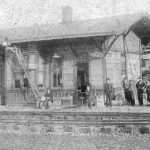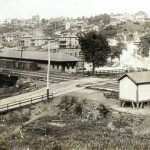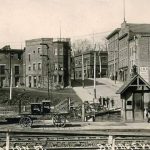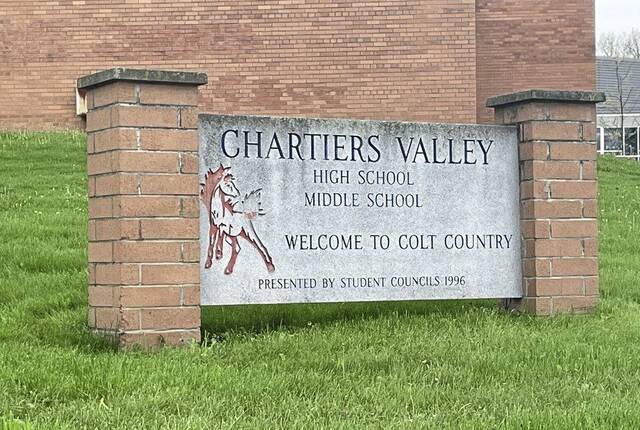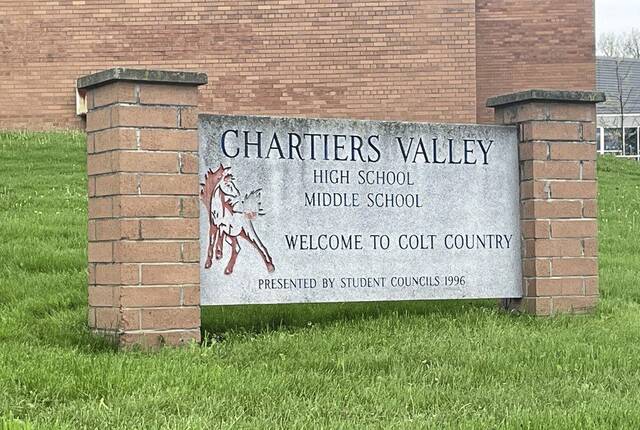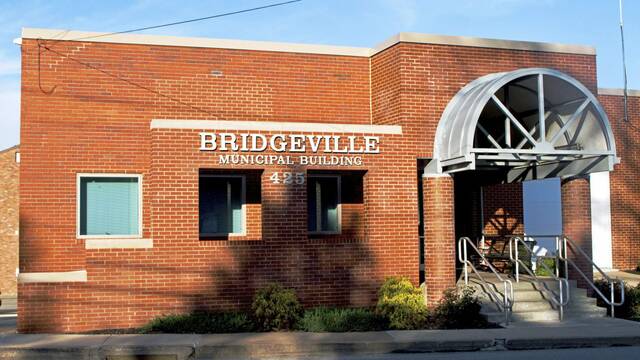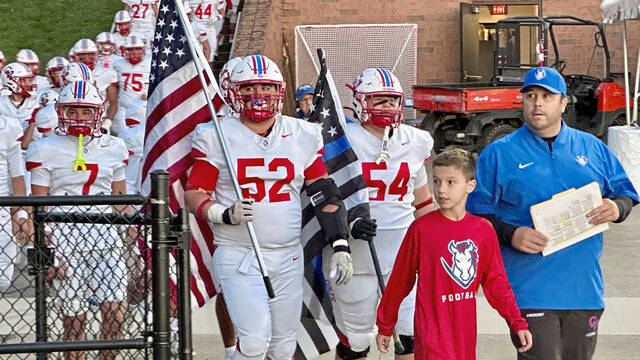Editor’s note: This article is the first of two parts.
These days, the road less traveled is on the rails.
By contrast, consider the scenario presented by the guest speaker at the most recent Bridgeville Area Historical Society meeting.
“In 1908, there were nine passenger trains each way from Washington to Pittsburgh. You could get on a train in Washington and be in the city in less than an hour. Bridgeville to Carnegie: seven minutes, nine times a day,” historian John Oyler said. “Everybody else was in horse and buggies. This was a great breakthrough in transportation.”
An even greater one, though, came out of Michigan the same year when Henry Ford introduced his “everyman’s car,” the mass-produced, durable and affordable Model T.
The rise and fall of the American railroad has been the subject of countless books, papers, articles and documentaries, with Oyler contributing substantially with decades’ worth of research.
On Jan. 29, he provided a local, regional — and in some cases, national — overview of the topic for historical society members with an informative, engaging program, “Early Railroads in the Chartiers Valley.”
The story begins in 1830, when only four railroads existed in the world, three in England one in the United States: the Baltimore & Ohio, carrying horse-drawn cars along 23 miles of line.
“In that era, a bunch of investors from Washington, Pa., decided we needed a railroad connecting Washington with Pittsburgh,” Oyler said, and for a preliminary survey, they hired civil engineer Charles De Hass. “This guy was walking down Chartiers Valley with surveying equipment, and in two months, he laid out the route that is still in use today.”
For the short term, nothing came of the investors’ plans. Construction by the sufficiently financed Chartiers Valley Railroad Co. finally began in 1853.
“They were doing well. In all, they spent $162,000,” Oyler said, but an 1857 financial panic halted progress. “Next came the Civil War, and they’re still in trouble.
“Following the war, the Pennsylvania Railroad decided, we’d really would like to have a right of way from downtown Pittsburgh to Mansfield,” later Carnegie. “So for $45,000, they acquire all the assets of the Chartiers Valley.”
The renamed Chartiers Railway Co. started regular service between Carnegie and Washington in 1871.
A decade later came the chartering of the Pittsburgh, Chartiers & Youghiogheny Railroad, formed by investors with the intention of building a line from McKees Rocks to Latrobe.
“And they were successful. They sold stock. They were able to fund it,” Oyler said, with construction through Carnegie and Scott, and branches along Thoms Run and Painters Run to serve coal mines. “That’s all that was ever built.”
Plans were to proceed east, he said, with crossings over the Monongahela and Youghiogheny rivers. “They were serious enough about this that it does show up on all the maps in the 1880s.”
By the 1890s, the Pittsburgh, Cincinnati, Chicago & St. Louis Railway, which leased the Chartiers Railway line, had built a Bridgeville & McDonald Branch that actually extended only as far as the Bishop station in Cecil. Whatever the case, the branch received a second track in 1902.
During the next year, railroad magnate George Gould — who inherited the holdings of his father, Jay Gould, whom Oyler and most historians call a “robber baron” — brought his vision of a transcontinental train line to Western Pennsylvania.
“In early June, Gould announces, ‘You ain’t seen nothin’ yet. I’m going to build the city of Gould, and it’s going to be adjacent to Bridgeville. And it is going to be the biggest railroad center this side of Altoona.’ They then ran full-page ads in the Pittsburgh papers for a week,” Oyler said.
“And the whole purpose of this was to sell building lots. Indeed, on the sixth of June, they ran excursion trains from downtown Pittsburgh to Bridgeville, and they sold 400 building lots on what we call Gould City Hill,” the area from the Norfolk & Western tracks, up Bridgeville’s highest hill, to the Bridgeville-Collier line on Prestley Road.
Meanwhile, Gould worked on the Wabash Pittsburgh Terminal Railway as local competition for the Pennsylvania, complete with an 11-floor, 197-foot-tall station at Liberty Avenue and Stanwix Street, plus a cantilever bridge spanning the Monongahela. Today, remnants of the line exist as a high-occupancy vehicle tunnel under Mt. Washington and, on either side of the river, twin bridge piers that are up for sale.
“The railroad did well. They did, indeed, go into service a year later and rain trains. The very first train out of the Wabash Terminal was an excursion train to St. Louis,” Oyler said, for the 1904 World’s Fair.
Three years later, another financial panic proved to be disastrous for Gould, whose own finances were overextended considerably. And on May 29, 1908, the Wabash Terminal Railway went into receivership, a court-appointed tool that can help troubled companies avoid bankruptcy.
On Oct. 1, Mr. Ford made his announcement that effectively changed the world.
Next month: Yesterday and today









